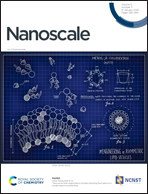Ultra-tough and highly ordered macroscopic fiber assembly from 2D functional metal oxide nanosheet liquid crystals and strong ionic interlayer bridging†
Abstract
Macroscopic assembly of 2D nanomaterials, especially for the one-dimensional macroscopic ordered fiber assembly from 2D liquid crystals (LCs), is rising to an unprecedented height and will continue to be an important topic in materials. However, this case of 2D functional metal oxide nanosheets is quite challenging. For the first time, the high-performance tungstate macroscopic fiber has been realized through an LC wet-spinning process involving the formation of LC colloid with spinnability and performance improvement by interlayer bridging in macroscopic assembly. The resultant macroscopic fiber yields record high tensile strength (198.5 MPa) and fracture toughness (3.0 MJ m−3) owing to their highly ordered structure and strong ionic interlayer bridging. Despite the intrinsically weak mechanical strength of the nanosheets, with only a few percent of graphene, the fibers manifest mechanical properties comparable to that of graphene fibers. Inspired by this concept, the possible macroscopic fibers assembled from other 2D functional metal oxide nanosheets will become a reality in the near future, holding great promise in aerospace and wearable applications.



 Please wait while we load your content...
Please wait while we load your content...